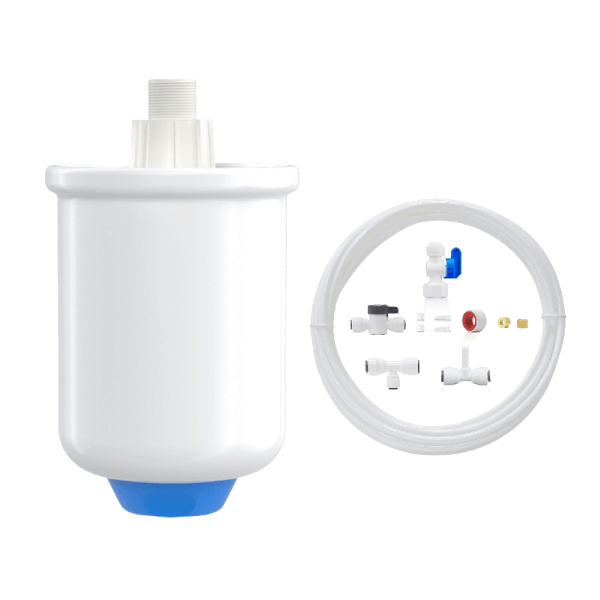Drinking Water Safety Concern After Wildfire
由 Dr. Jonathan Doyle - Updated June 08, 2023
As wildfires continue to ravage Canada’s vast landscapes, their impact extends far beyond the visible destruction. The staggering statistics reveal a harsh reality, with over 8 million acres consumed by flames this year across the country. Quebec alone accounts for nearly half a million acres, with thick smoke billowing south and east into the United States, resulting in deteriorating air quality for millions.
However, it is crucial to recognize that the repercussions of these wildfires go beyond the air we breathe. They also cast a looming shadow over the quality of our water sources, giving rise to concerns that demand urgent attention. In the following sections, we will explore the intricate relationship between wildfires and water quality, shedding light on the far-reaching consequences that necessitate our understanding and proactive measures.
How can wildfires affect drinking water quality?
Canada’s wildfire season typically spans from early April to late October, during which wildfires scorch through forests and grasslands, generating dense smoke. While smoke from wildfires is widely recognized as a significant source of air pollution for people in Canada, its impacts extend beyond the atmosphere to affect the quality of our water sources. Let’s explore the intricate connection between wildfires and water quality, considering the following aspects:
Ash and Debris Runoff
As wildfires rage, they release vast amounts of ash, debris, and burnt vegetation. When rain or runoff occurs, these remnants are carried into nearby rivers, lakes, and reservoirs. The resulting runoff introduces a range of contaminants, including gases, particles, and water vapor, into the water sources. This influx of pollutants derived from wildfires poses a direct threat to water quality.
Contaminant Composition
Wildfire smoke comprises a complex mixture of gases, particles, and water vapor. Within this composition, various pollutants are present, including sulphur dioxide, nitrogen dioxide, carbon monoxide, volatile organic compounds, fine particulate matter (PM2.5), and ozone. These pollutants, including fine particles that are invisible to the human eye, can infiltrate our lungs and bloodstream when inhaled, leading to severe health consequences, even fatalities.
Pathways of Contamination
The contaminants released by wildfires can find their way into water bodies through multiple pathways. Atmospheric deposition allows particles and gases to settle directly on the water surface. Moreover, rainwater and runoff transport pollutants from the burned areas, ultimately introducing them into rivers, lakes, and other water sources. These pathways contribute to the contamination of water supplies, making them unsuitable for consumption without appropriate treatment.
Water Treatment Challenges
The introduction of pollutants from wildfires presents significant challenges for water treatment systems and utilities. Increased levels of contaminants necessitate additional treatment processes to ensure the removal of impurities. The presence of fine particulate matter, stemming from wildfire smoke, can obstruct filtration systems and reduce the overall efficiency of water treatment facilities. As a result, water quality may be compromised, necessitating robust strategies to address these challenges effectively.
What can you do if your drinking water has been affected by a wildfire?
Staying properly hydrated is crucial, especially during wildfire events when the risk of dehydration and heat-related illnesses is heightened. The combination of intense heat, dry conditions, and potential exposure to smoke can rapidly deplete your body’s water reserves.
Based on the information provided, the impact of wildfires on water quality highlights the importance of having a reliable water purification system in place. To ensure access to clean and safe drinking water, even during periods of heightened pollution caused by wildfires, we recommend considering the following types of water filters:
Activated Carbon Filters
These filters are effective at removing organic compounds, volatile organic compounds (VOCs), and chlorine from the water. They can help eliminate any residual contaminants that may have entered the water supply as a result of wildfires.
Reverse Osmosis Systems
Reverse osmosis is a highly efficient water purification method that uses a semipermeable membrane to remove contaminants. It can effectively remove dissolved solids, heavy metals, bacteria, and viruses, providing a comprehensive purification solution for wildfire-affected water sources.
Ultraviolet (UV) Water Sterilizer
UV water sterilizer use UV light to kill or deactivate harmful microorganisms such as bacteria, viruses, and parasites. UV purification can be an excellent addition to other filtration methods, ensuring the elimination of any potential biological contaminants that may have entered the water supply due to wildfire impacts.
Multi-stage Filtration Systems
Consider opting for a comprehensive water purifier that combines multiple filtration technologies. This can include activated carbon filters, sediment filters, and additional stages for enhanced purification. Such systems are designed to address a wide range of contaminants and provide robust protection against potential pollutants resulting from wildfires.
When selecting a water purifier, make sure to consider factors such as flow rate, capacity, maintenance requirements, and the specific contaminants you want to target. It is also recommended to choose products that have been certified by reputable organizations like NSF International to ensure their effectiveness.

Remember, investing in a reliable water purifier is not only beneficial during wildfire seasons but also provides ongoing protection against various contaminants that may be present in your water supply. Prioritizing access to clean and safe drinking water is essential for the well-being of you and your loved ones.
Canada Wildfires in Recent Years
Canada has experienced several devastating wildfires in recent years. Wildfires are a natural occurrence in Canada’s forested regions, but climate change and other factors have contributed to an increase in their frequency and severity.
In 2016, the Fort McMurray wildfire in Alberta became one of the largest and costliest wildfires in Canadian history. It forced the evacuation of over 80,000 residents and destroyed thousands of homes and buildings.
In British Columbia, wildfires have become a regular occurrence during the summer months. In 2017 and 2018, the province experienced some of its worst wildfire seasons on record. These wildfires resulted in widespread evacuations, air quality issues, and significant damage to forests and infrastructure.
In recent years, Canada has also seen wildfires affecting other provinces, such as Ontario, Manitoba, and Saskatchewan. These fires have posed significant challenges to firefighting efforts and have caused environmental and economic impacts.
The Canadian government, along with provincial and territorial authorities, has been working on strategies to mitigate the impact of wildfires. This includes investing in firefighting resources, enhancing early warning systems, and implementing measures to reduce the risk of wildfires, such as controlled burns and forest management practices.












